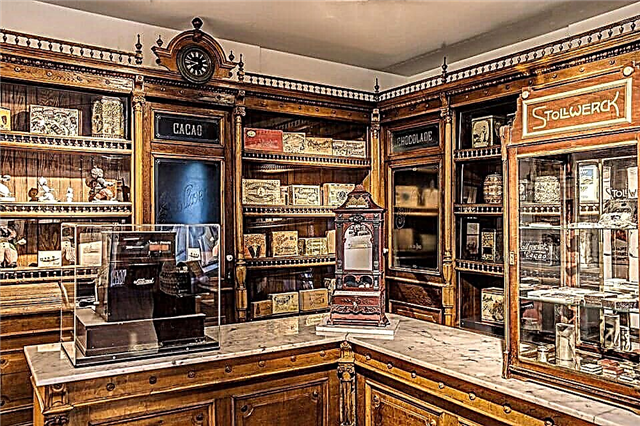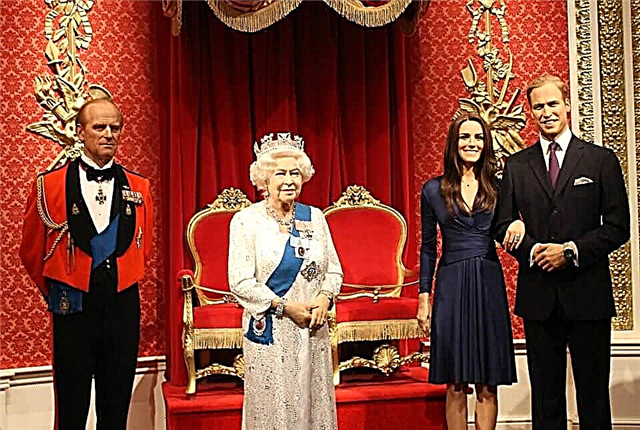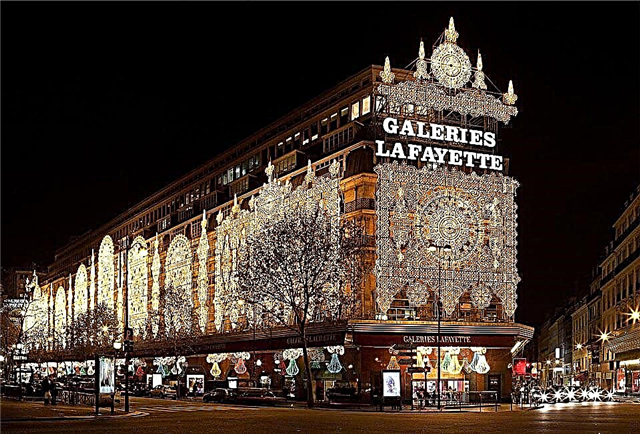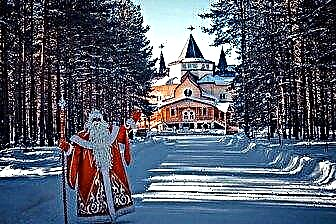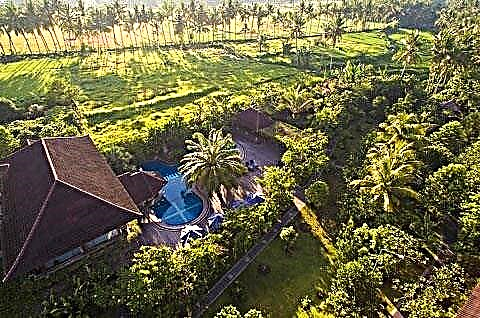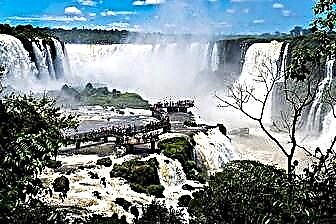The Federative Republic of Brazil is a hospitable country that attracts millions of tourists from all over the world. Climatic conditions allow to come here all year round, but Brazil is experiencing a real tourist boom on the eve of Easter, when the famous carnival in Rio de Janeiro is held.
Brazil is also famous for its bustling white sand beaches, picturesque nature and original local cuisine. In this country, it is worth visiting the amazing Amazon, the swampy Pantanal, the sandy Lencois Maranhenses and other national parks where you can see anaconda or go fishing for piranhas.
Since Brazil used to be a slave trade, some of its cities, such as Diamontina, Olinda, Ouro Preto, São Luis and Goias, have preserved colonial architecture almost intact. Among the variety of Brazilian cuisine, it is worth highlighting the unusual assortment of feijoada, mashed meat and beans "tutu", marinated sarapatel liver and jerky carne do sol.

The best hotels and hotels at affordable prices.
from 500 rubles / day
What to see in Brazil?
The most interesting and beautiful places, photos and a short description.
Iguazu Falls
The complex of waterfalls of the Iguazu River is located on the border of Brazil with Argentina. To fully enjoy the beauty of the waterfalls, tourists can take a sightseeing tour not only on foot or by car, but also by helicopter or boat. The unique local ecosystem is protected by UNESCO.

Statue of Christ the Redeemer
One of the seven "new wonders of the world", the Christ the Savior Monument, is located in Rio de Janeiro. It is a visiting card of the city, as well as a popular tourist attraction. The monument was opened in 1931, and in 1965 Pope Paul VI re-consecrated the statue of Christ the Savior.

Ipanema beach
Popular and safe - this is how Ipanema Beach can be described. Small waves prevail here, which makes swimming quite calm. Ipanema Beach Cafes sell a variety of drinks, ice cream, sandwiches or fruits. The shops, hotels and houses surrounding the beach are considered the most expensive in Rio de Janeiro.

Ouro Preto city
Ouro Preto is an old picturesque town founded in 1711. In the XVII-XVIII centuries, gold was mined here, which contributed to the rapid development of the city. At the end of the 19th century, gold mining ceased, and Ouro Preto fell into desolation. For numerous well-preserved architectural examples of the colonial baroque, the city is included in the UNESCO list.

Serra da Capivara National Park
The northeast of the country is occupied by the Serra da Capivara National Park, which is under the protection of UNESCO, with an area of more than 120 thousand hectares. The park is prized primarily for its unique rock carvings dating from the 14th century BC. In Serra da Capivara, 64 archaeological zones have been discovered, to which there are 14 hiking trails.

Theater Amazonas
A prominent representative of eclecticism, the pompous Amazonas Opera House was opened in 1896 in the city of Manaus. The building was erected with the money of the rich "rubber tycoons", but over time, when the city became impoverished, the theater fell into disrepair. The restoration work of 1990 returned the building to its former beauty, and today the theater is giving performances again.

Fernando de Noronha
The unique ecosystem of the Fernando de Noronha archipelago has been declared a World Heritage of Humanity by UNESCO since 2002. Thanks to well-thought-out infrastructure, all 20 islands of the archipelago are considered a high-class ecotourism center. You can also go diving or surfing here.

Olinda historic center
The foundations of the city of Olinda, located in the north-east of the country, were laid back in the 16th century. Portuguese colonialists. The buildings of the historic center date back to the 18th century and are considered the best-preserved example of the first period of settlement. Since 1982, the historic center of Olinda has been included in the UNESCO List.

The beaches of El Salvador
Salvador is a colorful city and home to the Brazilian martial art of capoeira. Salvador was once a slave port, but today it is a popular beach resort. El Salvador offers its tourists about 20 equipped beaches with a length of more than 40 km. Capoeira masters perform every evening on Piazza Pelourinho.

Pantanal
A wetland reserve, home to giant butterflies, rare birds and animals. In the most visited city of Pantanal Cuiaba, you can book a tour. In addition to the usual entertainment, in Pantanal you can go fishing for piranhas or take part in a night boat safari.

Carnival in Rio de Janeiro
Every February, Rio de Janeiro welcomes millions of tourists to the famous Brazilian Carnival. The highlight of the carnival is the parade of samba schools, for which performers have been preparing for many months. To visit the four-day carnival, tourists should make a reservation in hotels in advance.

The historic center of Salvador da Bahia
Thanks to the perfectly preserved examples of colonial architecture, the historic districts of Salvador da Bahia were inscribed on the UNESCO List in 1985. Tourists here should visit Piazza Pelourinho, the local cathedral and the Elevador Lacerda elevator.

Amazon rainforest
The rainforests that surround the Amazon River are over 55 million years old. It is home to a huge number of animals, birds and insects. Tourists from all over the world flock here to see the local aborigines, go canoeing under the moonlight, or catch a couple of piranhas.

Karakol waterfall
The very popular Karakol waterfall, which offers an unusually beautiful view of the surrounding landscape, is located 7 km from the city of Canela. An observation deck for tourists, equipped with an elevator, was built at a short distance from the waterfall. There are also souvenir shops and cafes here.

Jesuit Missions of the Guarani Region
In 1983, five Jesuit missions of the 17th-18th centuries were added to the UNESCO List. These reduction missions, which were mini-cities with all the accompanying infrastructure, were built to convert local tribes, in particular Guarani Indians, to Catholicism.

Pedra Pintada
Pedra Pintada is a famous archaeological site in Brazil. Inside this 35 meter rock, caves with pink and white rock paintings have been discovered. Specialists date these drawings to the 10th millennium BC. Various household items of ancient people were also found here.

Portuguese Royal Library
Located in Rio de Janeiro, the Portuguese Royal Library was founded in 1837 and has been public since 1900. The library building, built in the neo-Manueline style, combines elements of the Gothic and Renaissance. It contains about 350 thousand books in Portuguese.

Lencois Maranhenses National Park
Located in the northeast of the country, Lencois Maranhensis National Park was founded in 1981. More than 1000 km2 of the park is occupied by amazing sand dunes, the height of which is about 40 m. After the rains, the water forms lagoons suitable for swimming. Entrance to the park is free, and there is a charge for bike and sandboard rentals.

Sugarloaf Mountain
One of the symbols of Rio de Janeiro is Sugarloaf Mountain. Located near Guanabara Bay, this 396-meter-high mountain is an excellent viewing platform. You can get to the mountain on foot, by cable car or along one of the many climbing routes.

Maracana
The largest stadium in Brazil, completed in 1965, is officially named Mario Filho, after the famous Brazilian sports journalist. The stadium was created as a result of the joint work of 7 best architects, and in 1980, John Paul II served here.

Ibirapuera park
São Paulo Ibirapuera City Park, whose buildings were designed by the famous Oscar Niemeyer, was opened in 1954. For its vast green space, this popular landmark is also called the lungs of the city. Ibirapuera is home to the Planetarium, the Museum of Modern Art, the São Paulo Obelisk and the Bandeiras Monument.

Capacabana beach
The world famous Capacabana Beach is located in Rio de Janeiro. This four-kilometer recreation area has been used more than once as a concert venue. Rod Stewart, Elton John, Mick Jagger and Lenny Kravitz performed here. A variety of coastal hotels, cafes, discos and casinos make Capacabana a truly unforgettable holiday.

Bon Jesus do Congonhas
This is an unusually beautiful church complex that was built from 1773 to 1809. Bon Jesus do Congonhas consists of a church, seven chapels of the Way of the Cross of Christ, and sculptures of the prophets. Since 1985, this church complex has been under the protection of UNESCO.

The historic center of Diamantina
In the Espiniasu mountains, there is the town of Diamantina, where you can see perfectly preserved buildings from the 18th century. Particularly noteworthy is the city's visiting card - the Gloria complex, which consists of two buildings from the 18th and 19th centuries. Since 1999, the historic center of Diamantina has been listed by UNSCO.

Chapada dos Veadeirus National Park
Chapada dos Veadeirus National Park is located in the center of the country, just a few kilometers from the capital. It was created in 1961, and in 2001 was included in the UNESCO list. You can only move in the park on foot, but this is more than compensated by the beautiful landscapes. There are several canyons and waterfalls.



